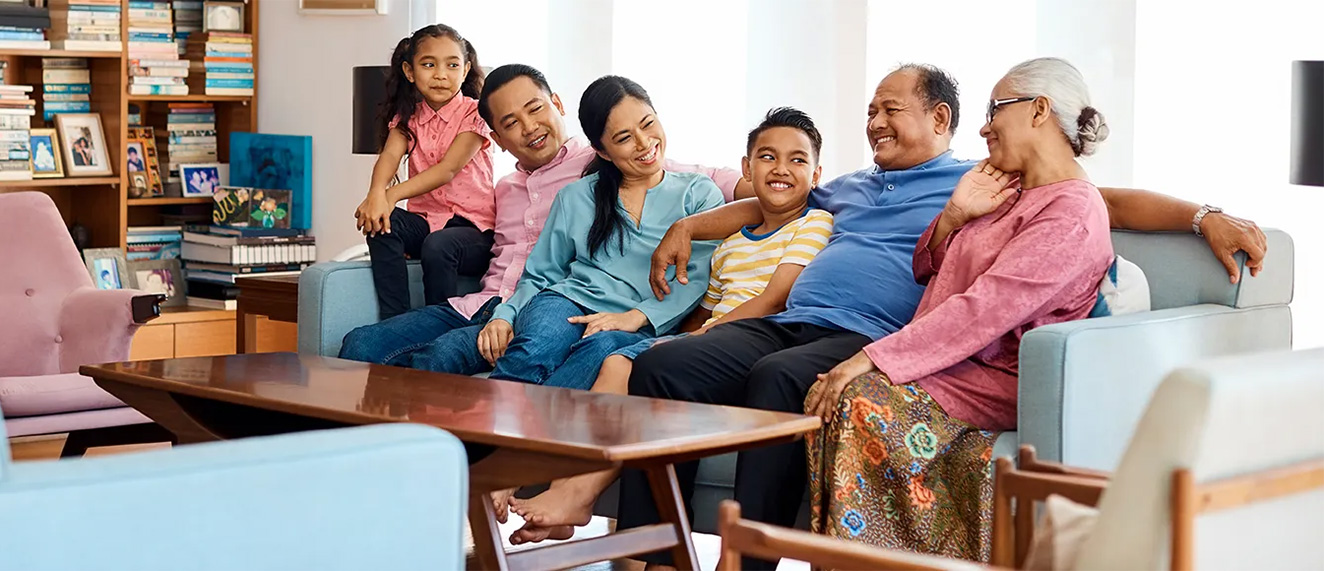A version of this blog first appears on REALTOR.ca Living Room, your source for all things home—and perfect content to share with your clients.
Multi-generational living—where two or three generations of a family live under the same roof—continues to grow in Canada and the real estate market is taking note.
According to Statistics Canada, multi-generational households are the fastest growing type of households in the country. Between 2001 to 2016, multi-generational households rose 37.5%, which was well above the median increase (21.7%) for all households.
From an ageing population (more seniors living with their children and grandchildren) to increasing levels of immigration, there are a number of factors influencing the demand.
“I think of it as going back to times of yore, where parents are now living with their children,” says Pauline Aunger, REALTOR®, broker and former president of the Canadian Real Estate Association (CREA). “What we’re seeing is a widowed parent coming back to live with their children.”
Increasingly, retired parents are selling their homes and moving into their children’s in-law suites, allowing them to play a bigger role in their children’s and grandchildren’s lives.
But while older parents moving in with their children is the most common generation-combination, extended families purchasing homes together—whether siblings or with extended family like cousins—is also part of the growing phenomenon.
Indigenous and immigrant families, which account for a growing share of Canada’s population, are more likely to live with their extended families. In 2016, multi-generational households were most common in Nunavut (12.2%) and the Northwest Territories (4.3%), followed by Ontario (3.9%) and British Columbia (3.6%).
The two largest markets for multi-generational households are Toronto and Vancouver. Besides both cities having high proportions of immigrants, they’re also Canada’s priciest housing markets, where sharing expenses might make a lot of financial sense.
Homebuilders have responded by offering homes accommodating multi-generational living. “We definitely see opportunity in providing multi-generational living options to our customers,” says Justin Castelino, marketing manager at Brookfield Residential in Calgary.
Castelino says fully developed basement suites are popular because they provide a sense of independent living while also maintaining a connection to the rest of the house. Those suites typically have separate entrances, their own kitchen and full bathroom, bedrooms and living area.
Potential clients can use the REALTOR.ca “keyword search” filter to find homes with particular keywords like “accessible” or “in-law”, etc. so be sure to include those in your listings.
Multi-generational living has a lot of benefits. It fosters a sense of familial and cultural connection—keeping families closer together. Another key driver is cost. Sharing household expenses can make a lot of financial sense for big families.
Keep in mind, however, there are also costs associated with buying suitably large abodes with multiple configurations. Your clients can get a better idea of what their family can buy using REALTOR.ca’s Affordability Calculator.
For example, Castelino says a traditionally developed basement could cost $25,000 to $30,000 but adding a self-contained suite can run up to the $40,000 to $50,000 range. And of course, there will be additional hydro, maintenance, insurance and other costs to consider.
Additionally, the greater the number of people living in a home, the greater the challenges; often, a healthy dose of patience is needed. This living arrangement is best suited for families who get along.
Have you helped a family find the perfect multi-generational home? Tell us about your experience in the Comments.





